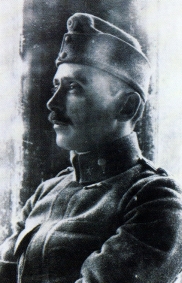Encephalitis lethargica
| Encephalitis lethargica | |
|---|---|
 |
|
| First described by Constantin von Economo. | |
| Classification and external resources | |
| Specialty | infectious disease |
| ICD-10 | A85.8 |
| ICD-9-CM | 049.8 |
| DiseasesDB | 32498 |
Encephalitis lethargica or von Economo disease is an atypical form of encephalitis. Also known as "sleepy sickness" (distinct from tsetse fly-transmitted sleeping sickness), it was first described in 1917 by the neurologist Constantin von Economo and the pathologist Jean-René Cruchet.
The disease attacks the brain, leaving some victims in a statue-like condition, speechless and motionless. Between 1915 and 1926, an epidemic of encephalitis lethargica spread around the world. Nearly five million people were affected, a third of whom died in the acute stages. Many of those who survived never returned to their pre-existing "aliveness". "They would be conscious and aware – yet not fully awake; they would sit motionless and speechless all day in their chairs, totally lacking energy, impetus, initiative, motive, appetite, affect or desire; they registered what went on about them without active attention, and with profound indifference. They neither conveyed nor felt the feeling of life; they were as insubstantial as ghosts, and as passive as zombies." No recurrence of the epidemic has since been reported, though isolated cases continue to occur.
The course of encephalitis lethargica varies depending upon complications or accompanying disorders. It is characterized by high fever, sore throat, headache, lethargy, double vision, delayed physical and mental response, sleep inversion and catatonia. In severe cases, patients may enter a coma-like state (akinetic mutism). Patients may also experience abnormal eye movements ("oculogyric crises"),parkinsonism, upper body weakness, muscular pains, tremors, neck rigidity, and behavioral changes including psychosis.Klazomania (a vocal tic) is sometimes present.
...
Wikipedia
